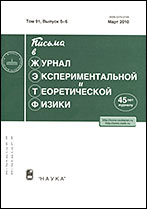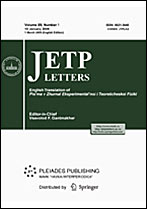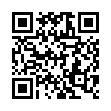|
This article is cited in 1 scientific paper (total in 1 paper)
OPTICS AND NUCLEAR PHYSICS
Weak coupling between light and matter in photonic crystals based on porous silicon responsible for the enhancement of fluorescence of quantum dots under two-photon excitation
I. S. Kriukovaab, V. A. Krivenkova, P. S. Samokhvalova, I. R. Nabievab
a National Research Nuclear University MEPhI (Moscow Engineering Physics Institute), Moscow, 115409 Russia
b Laboratoire de Recherche en Nanosciences, LRN-EA4682, Université de Reims Champagne-Ardenne, 51100 Reims, France
Abstract:
The development of optical and, in particular, photoluminescent sensors is currently becoming more and more significant because of their universality, selectivity, and high sensitivity ensuring their wide applications in practice. The efficiency of existing photoluminescent sensors can be increased by using photoluminescent nanomaterials and hybrid nanostructures. For biological applications of photoluminescent sensors, it is extremely relevant to excite photoluminescence in the near infrared spectral range, which allows excluding the effect of autofluorescence of biomolecules and ensuring a deeper penetration of radiation into biological tissues. In this work, it has been studied how the spectral and kinetic parameters of photoluminescence change under two-photon excitation of semiconductor quantum dots incorporated into a one-dimensional photonic crystal, a porous silicon microcavity. It has been shown that the formation of a weak coupling between an exciton transition in quantum dots and an eigenmode of the microcavity enhances the photoluminescence of quantum dots. It is important that quantum dots placed in the porous silicon matrix hold a sufficiently large cross section for two-photon absorption, which makes it possible to efficiently excite their exciton states up to saturation without reaching powers leading to the photothermic destruction of the structure of porous silicon and to the disappearance of the weak coupling effect. It has been demonstrated that the radiative recombination rate under the two-photon excitation of the system consisting of quantum dots and the microcavity increases by a factor of 4.3; it has been shown that this increase is due to the Purcell effect. Thus, fabricated microcavities based on 1D porous silicon crystals allow controlling the quantum yield of photoluminescence of quantum dots under two-photon excitation, which opens prospects for the development of new photoluminescent sensors based on quantum dots operating in the near infrared spectral range.
Received: 17.09.2020
Revised: 30.09.2020
Accepted: 02.10.2020
Citation:
I. S. Kriukova, V. A. Krivenkov, P. S. Samokhvalov, I. R. Nabiev, “Weak coupling between light and matter in photonic crystals based on porous silicon responsible for the enhancement of fluorescence of quantum dots under two-photon excitation”, Pis'ma v Zh. Èksper. Teoret. Fiz., 112:9 (2020), 584–590; JETP Letters, 112:9 (2020), 537–542
Linking options:
https://www.mathnet.ru/eng/jetpl6287 https://www.mathnet.ru/eng/jetpl/v112/i9/p584
|


| Statistics & downloads: |
| Abstract page: | 128 | | Full-text PDF : | 11 | | References: | 25 | | First page: | 5 |
|





 Contact us:
Contact us: Terms of Use
Terms of Use
 Registration to the website
Registration to the website Logotypes
Logotypes








 Citation in format
Citation in format 
